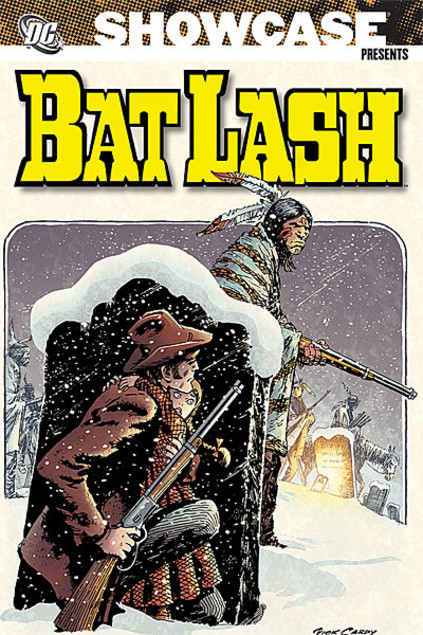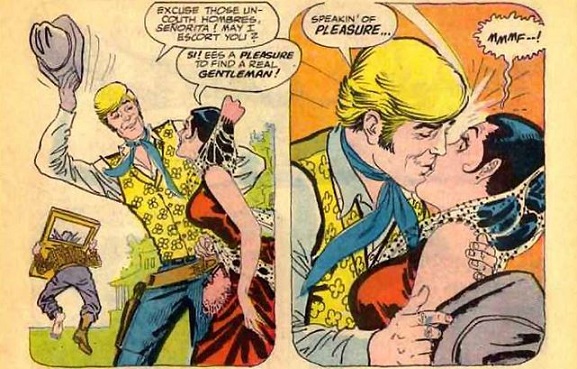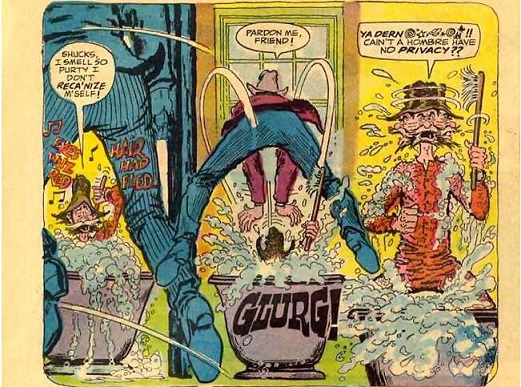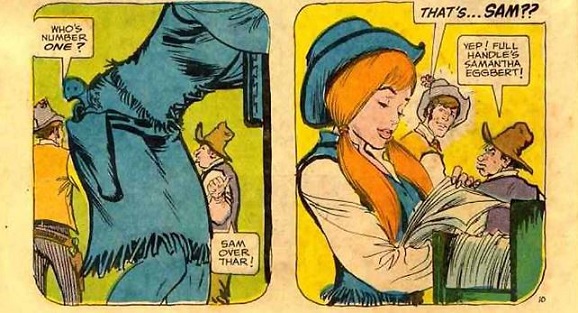
Showcase Presents: Bat Lash
Sergio Aragones, Nick Cardy, Denny O’Neil and friends
Reprints Showcase #76, Bat Lash #1-7, DC Special Series #16 & Jonah Hex #49, 51 & 52
Get this for: Nick Cardy art going from full on cartoonish to spaghetti western realist in two panels
Having now read through several of Showcase volumes of early sixties DC Silver Age series, I felt it was time for a break. Important as those series are, they do suffer from the fact that these were never meant to read through in one sitting, with many of the stories being variations on a theme, the same ones cropping up again and again. What I needed instead wasn’t yet another huge 500+ page wodge, but something slim and slightly more complex. The collected Bat Lash was perfect.

By 1968, when Bat Lash made his first appearance, in Showcase of course, comics was very different from where it was at the start of the sixties. The Silver Age revolution DC had unleashed had been taken up by Marvel with great enthusiasm and while DC might still be selling more comics than them, all the excitement was at Marvel. Unlike DC, Stan Lee and co had aimed their comics at a more adult readership, making both their heroes’ morals and stories slightly more complicated than the goody two shoes world of DC, not helped by the latter’s bureaucratic ways of working. By the end of the decade though DC was working hard to catch up with Marvel, Bat Lash being one of the results of this improvement drive.

Bat Lash was a very different sort of western hero. A dandy and a scoundrel, he had a taste for the finer things in life, especially if those finer things were female and at times he might as well have been wearing a fedora instead of a stetson; he’s portrayed as a little bit too grab handey at times, though of course every woman he puts the moves on ends up liking it very much, except when they have their own nefarious designs. Bat Lash was the creation of an unlikely duo: Sergio Aragones, much better known for his humouristic, big footed work for Mad and Groo the Warrio and artist Nick Cardy, best known for his Aquaman and Teen Titans art, with Denny O’Neil helping with the scripting after his first appearance.

Most of the stories here follow the same pattern: open with Bat Lash in peril, only to saved at the last moment by the woman he got into trouble for, then riding out of whichever town he was in to get involved in some sort of adventure in which his avarice has to combat his well buried better nature. These then are still fairly formulaic stories, but much more interesting and with some continuity between them, with our hero crossing the border into Mexico in one issue and attempting to get out in the next.

What really makes the original Bat Lash series is Nick Cardy’s artwork, some of the best he’s ever done. Just look at the Showcase cover above, originally done for issue two: that’s a brilliantly done scene, telling a story with one picture. Cardy has a real affinity for drawing the old west and is great at action scenes as in that first sequence showing Lash being ambushed and turning the tables on his ambusher. But he also does well with humour, which turns up a lot in these stories, as in the sequence where Bat Lash has to escape from his hotel by fleeing through some old-timer’s bath. It’s clearly the same artwork, just a bit more exaggerated. And of course Cardy also has his usual flair with drawing women, who have a heft and physicality to them that’s rare for that time, especially at DC. Plenty of artists that could draw pretty girls, but Cardy’s are real women. In black and white his artwork looks even better than when it’s coloured.

Sadly the original series only lasted seven issues, which is barely long enough to have gotten the sales figures for the first issue in. Since then he’d been wandering around the edges of DC’s western titles and this volumes includes some of his later appearances, which aren’t bad, but without Aragones or Cardy onboard, lack the charm of the original. A pity too that in that very last issue, after the previous one had featured his origin, Lash runs across a bounty hunter with gunslinging skills as good and perhaps even better as his own, out for his blood and who might just be his younger brother, a storyline that was ended just as it begun…
